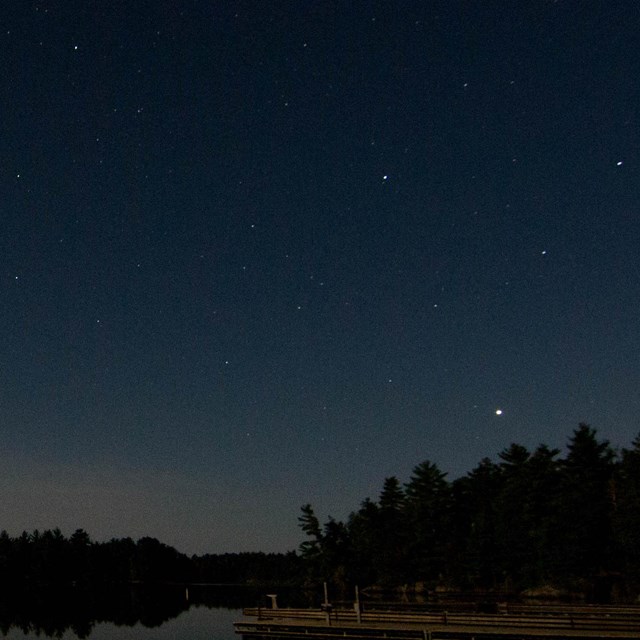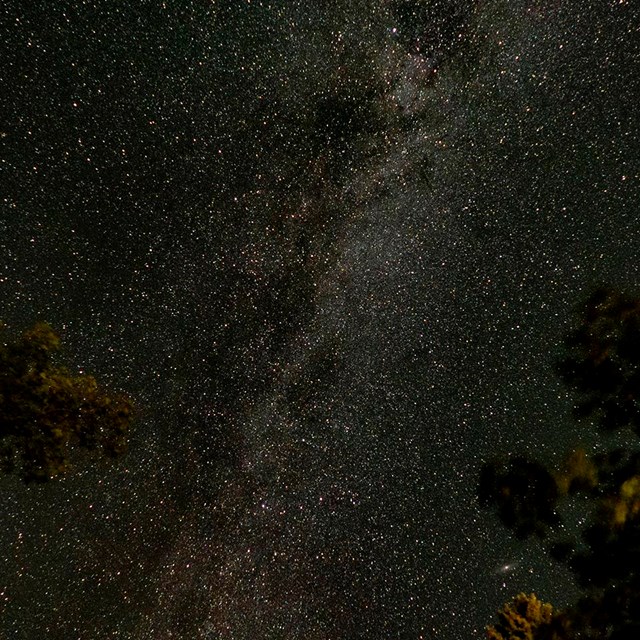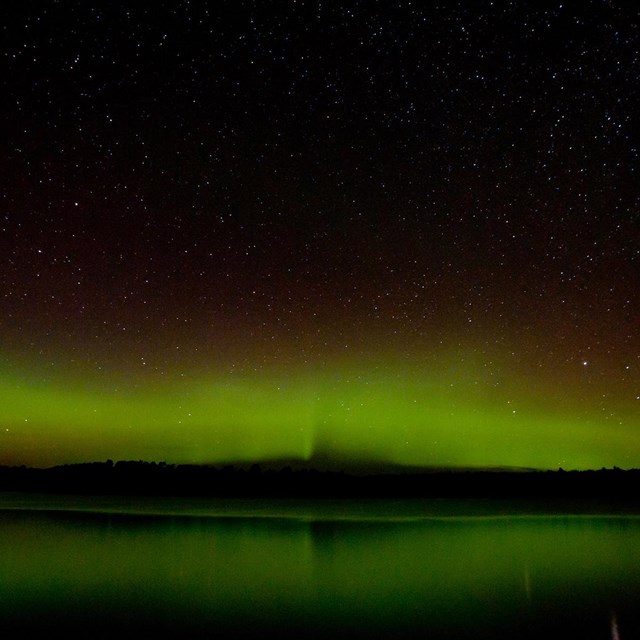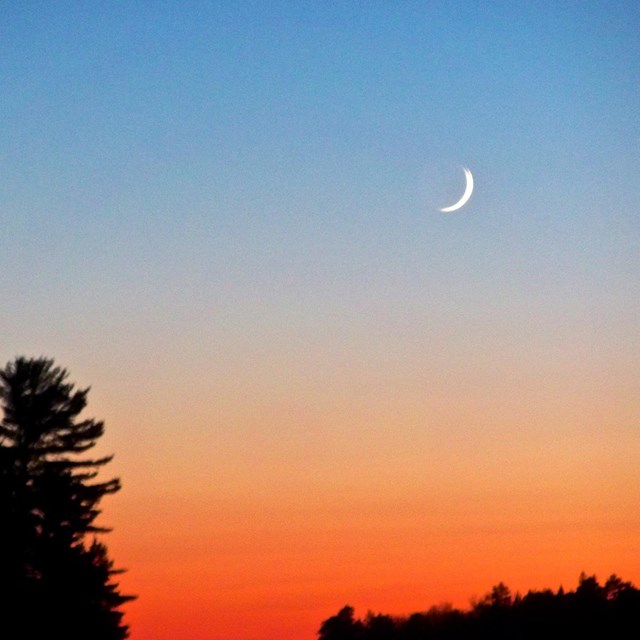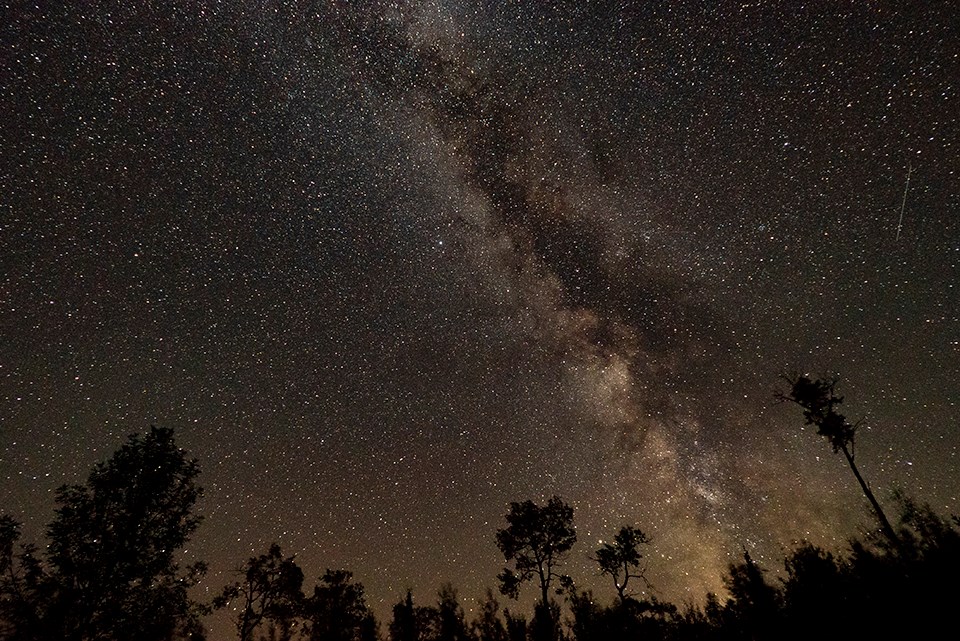
NPS 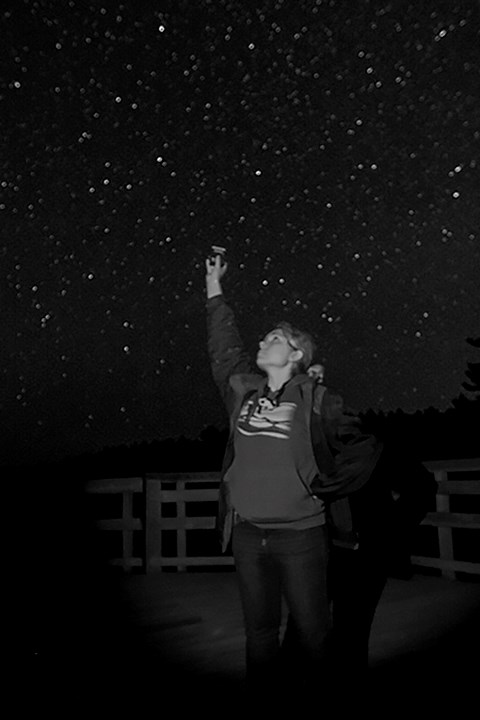
NPS / Lapp Stargazing in Voyageurs National ParkPlanets shine, shooting stars dart across the sky, satellites float along the horizon, and our own galaxy wraps an arm over our globe. Earth is a very small, singular, unique place within this awe-inspiring cosmos.Step out, look up, and embrace the wonder of a Voyageurs night. Where to View the Dark SkiesMany places in Voyageurs have open horizons with beautiful views of the park's dark sky. However, there are two designated dark sky areas in the park where you can easily access the views. The Meadwood Road Day Use Area along (Ash River Visitor Center Road) is one designated dark sky location and the upper parking lot at the Rainy Lake Visitor Center is another great dark sky designated area. In addition, many of the park's lakeshores, clearings (on trails or in the backcountry), and campsite docks provide wide, unobstructed views of the stars—especially if there is little or no artificial light nearby.When to StargazeA clear, moonless night can provide the best stargazing opportunities because a bright moon will obscure fainter stars. Checking a moon phase calendar can be helpful in planning, as well as watching the weather forecast to avoid storms and cloudy evenings.Summer nights are generally the best times to view the Milky Way: a spiral of our own galaxy. During summer, the Northern hemisphere is tilted towards the center of the Milky Way, so it is denser and easier to see. In general, everything we can see using just our eyes from our location is within the Milky Way galaxy, with two exceptions: the Triangulum Galaxy and the Andromeda Galaxy. 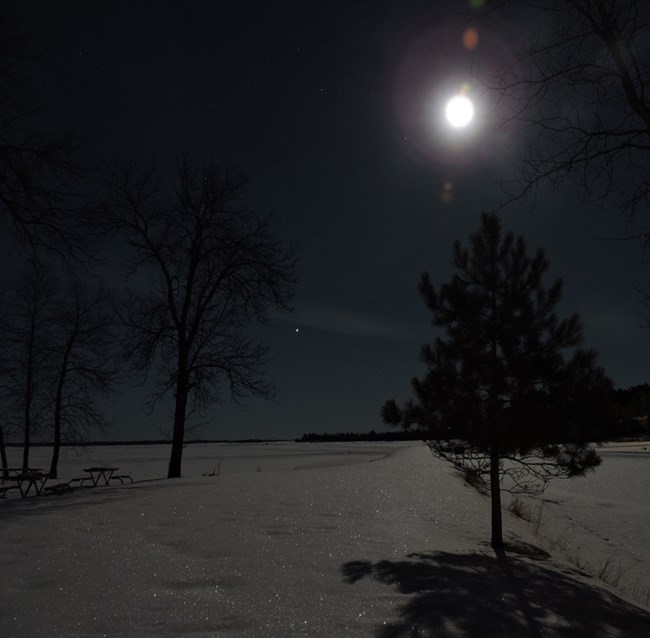
NPS Useful Items to Bring
Different Cultures and their ConstellationsA star chart (also known as a planisphere) can help you find the constellations and the Milky Way. There are also several free smartphone apps (e.g. SkyView Lite, Star Walk 2 Ads+, Star Chart, and NASA App) that can provide assistance in finding constellations throughout the year. What to Look For
Spot the Space Station from VoyageursIf an object is moving quickly and not blinking, it is likely an unmanned satellite...or possibly even the International Space Station! Check NASA's widget below to find out when and where the station will be visible from the park. 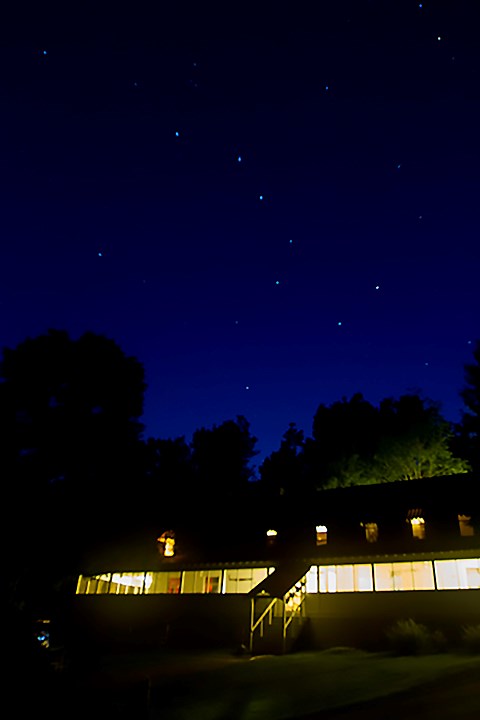
NPS / Lapp Stargazing Tips and TechniquesGive Yourself TimeIt can take 20 to 30 minutes for your eyes to adjust to the dark; spend enough time outside away from bright lights to allow your eyes to adjust. Use a Red LightOne brief flash of white light from a flashlight, cell phone, or vehicle headlight can set your night vision back and require several minutes for your eyes to readjust once again to darkness. A red light will not impact your night vision nearly as much. Many flashlights and headlamps have a red light feature. If yours does not, you can also cover your white light with red plastic or cellophane. Bring a Friend; Minimize your LightCamping and walking in the dark can sometimes make people feel anxious, especially in an wild or unfamiliar place. People often find comfort using bright, white lanterns and other lights in the park after dark. Turning off these lights will strongly improve your stargazing, and it also benefits nocturnal wildlife that live in the park. 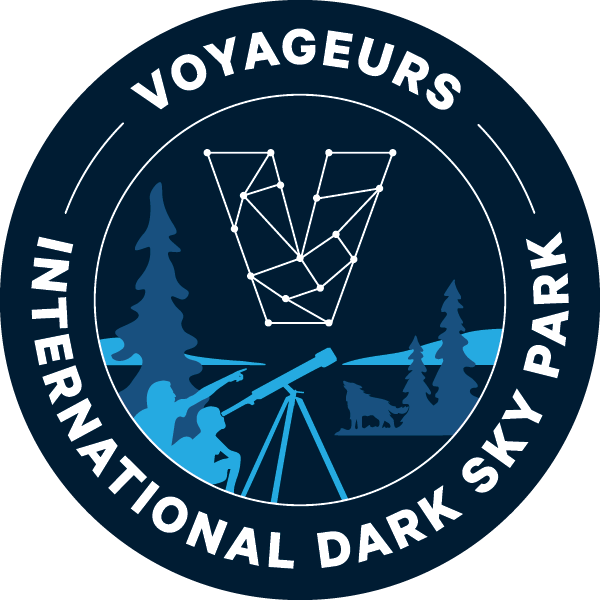
NPS Dark Skies at VoyageursVoyageurs has improved its dark sky preservation in order to become certified as a Dark Sky Park. However, Dark Sky certification does not only have to be for national parks. Learn below what Voyageurs is doing to protect the night, and also what you can do (if you desire) to make the lights around your own home more effective, efficient, and night-sky-friendly.
Visit our keyboard shortcuts docs for details
In this episode, gaze upon the Voyageurs National Park night sky with Ashley Wilson, Dark Sky intern, and the community while learning about light pollution and IDA dark sky certification. |
Last updated: January 15, 2024

